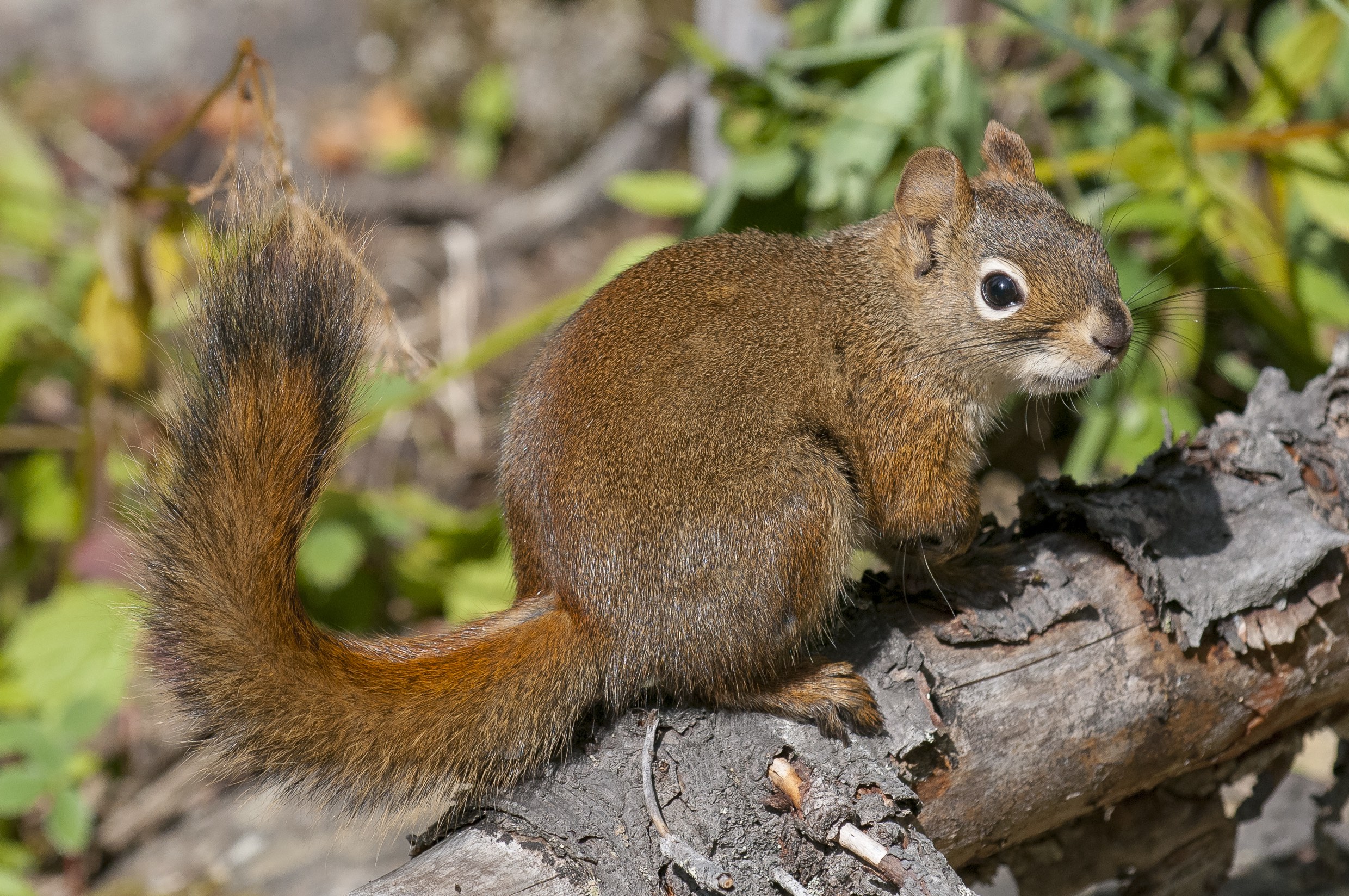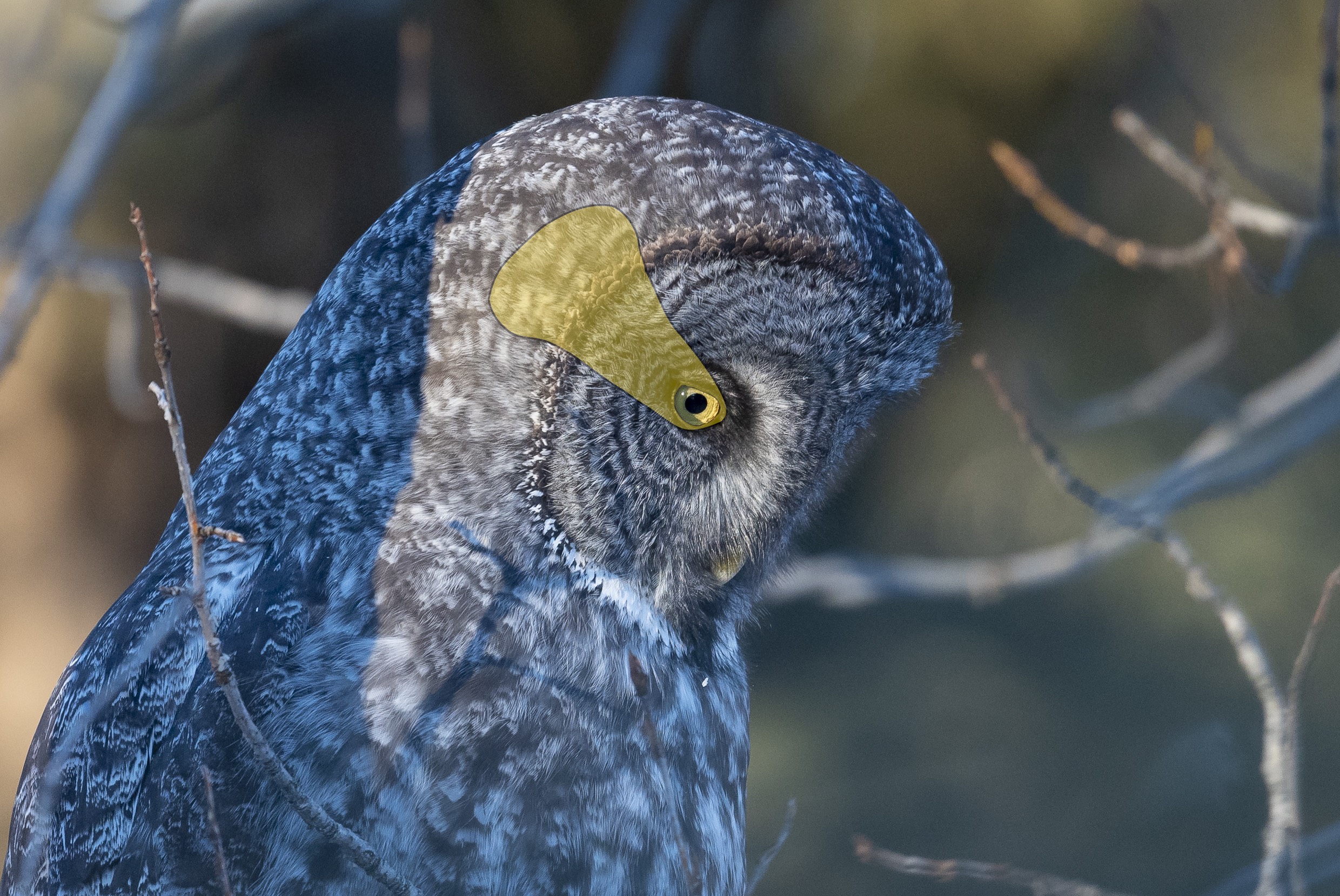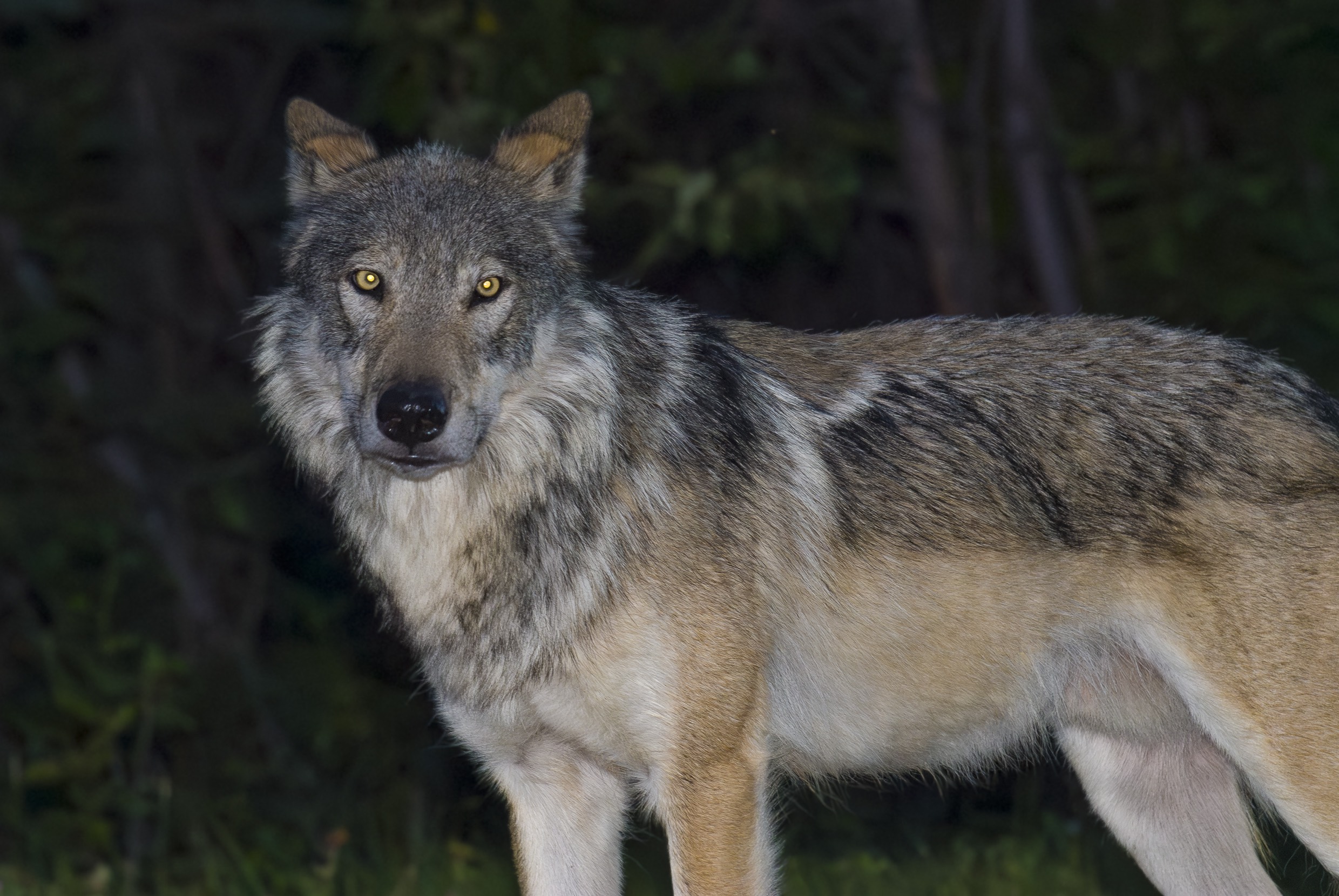A few years ago, I was helping Jasper National Park’s conservation biologist, Brenda Shepherd, conduct a survey for Black Swifts at Athabasca Falls.
Black Swifts nest in canyons and even behind waterfalls. They leave the nest before sun up and don’t return until nightfall. Surveying for Black Swifts consists of counting the birds as they return to their nests, just as the light is failing; the sky still has some illumination, but it’s pretty much pitch black on the ground.
Athabasca Falls, the view from the bridge. The swifts should be arriving soon. // Mark Bradley
On this particular night, I was standing on the bridge overlooking the falls, waiting for swifts to appear, when a gaggle of chattering 20-somethings walked past me, disappearing into the inky forest. What they intended to see there was beyond me. Black Swift counting quickly became sub-par, as a gentle rain started up, and the sky darkened—black birds in the darkness are not especially countable! The young people passed me again on their way back to the parking lot, and I eventually gathered up my gear and headed there myself.
Imagine my surprise when I found them standing around shivering in the rain, with no vehicle in sight! Curious as to how they got to the falls, I approached them and got their story:
“Hey, um… how did you guys get here?” (notice I refrained from saying “Dude, where’s your car?”)
“Well…we walked here from the hostel, but now it’s dark, and we don’t know how to get back.”
If only they had the amazing night vision of an owl or a cat, they would have had no problem making their way home!
Vertebrate vision
Vision has evolved independently more than 1,500 times in the animal kingdom; the first eyes appeared in the fossil record some 550 million years ago. Some of these eyes, naturally, are wildly different from our own – a Hoverfly, for example, has thousands of individual visual structures, each with a lens and light sensitive cells, even though they are organized into what looks like just two big eyes. Sea Urchins, on the other hand, are covered in photoreceptors, and researchers think that their entire body functions as a single eye. For our purposes, however, we’re going to focus on vertebrates and how their eyes have evolved to deal with low light conditions.

A Hoverfly scans for danger with its thousands of lenses. // Mark Bradley
The eyes of all vertebrates (animals with a backbone: mammals, birds, and reptiles) are all built on the same general plan: A round eyeball, filled with clear liquid, has a hole at the front (the pupil) to let light in. Additionally, they have a photo-sensitive layer of cells at the back (the retina) which turns the light into nerve impulses that the brain can interpret. There’s also a lens, just behind the pupil, which focusses light on the retina so that they can see fine detail. That pupil can get smaller or larger depending on how much light is around; it’s small during the day, and large at night. The lens can also change shape to focus on objects at different distances.
Size matters
Several adaptations have evolved to enable nocturnal (active during the night) animals to make the most of sparse light. One such adaptation is that nocturnal animals generally have larger eyes than their diurnal (active during the day) counterparts. Take squirrels for example. In Jasper we have quite a few squirrels, including the red squirrel and the northern flying squirrel.

The diurnal (active during the day) Red Squirrel. // Mark Bradley
The red squirrel, being diurnal, has much smaller eyes than the nocturnal flying squirrel. Of course a bigger eyeball means a bigger retina (all the better for turning that faint light into nerve impulses, my dear) and the pupils of big eyes can be larger as well, even in relation to that bigger eye.
The shape of things
Remember when I said that all vertebrates have round eyes? Well that’s not always true. The eyes of an owl are shaped more like tubes, and they are held firmly in place by rings of bone called sclerotic rings. That tubular shape is kind of an anatomical “cheat” that allows an owl to have really huge retinas and pupils in relation to the size of their eyes and head. The trade-off is that their field of view is smaller. Our field of view is about 180 degrees, while an owl’s is only about 110.

Approximate size and shape of a Great Grey Owl’s eyes. // Mark Bradley
This is OK for an owl, however, because as predators, having binocular vision (both eyes pointing forward) for depth perception is the most important trait. Moreover, owls make up for their narrow field of view by having a very flexible neck—so flexible, that they can twist their head 270 degrees in each direction (humans can only manage a paltry 90 degrees).
Light in shining armour
Another adaptation that some nocturnal animals have evolved is a second layer of cells behind the retina called the tapetum lucidum—literally “shining layer,” in Latin. This layer acts as a kind of reflector which bounces the light back through the retina a second time, to give those photoreceptors another chance to activate and detect faint light. Many animals have this reflector: cats, dogs, weasels, and even alligators. Humans, however, do not— another reason why we don’t see so well at night. You can tell which animals have tapetum lucidum by their “eye shine” at night; in the presence of a bright light, such as a car’s headlights, their pupils will glow a bright colour, usually yellow or green. Conversely, the “red eye” you see in flash photographs of your friends is caused by light reflecting off the retina’s blood vessels.

The tapetum lucidum of a wolf on the Maligne Road looking into the author’s headlights. // Mark Bradley
To the rescue
If only those young adults at Athabasca Falls had larger eyeballs, bigger retinas and a tapetum lucidum, getting back to the hostel would have been a snap! I tried to convince them that all they had to do was walk along the road back to the hostel (a distance of less than a kilometre; they had strolled along the river to get to the falls in the first place). But they were having none of that. At this point they were cold, wet and had lost all sense of direction. Given the circumstances, I decided to bend the rules a little and pile them all into the back of the Parks Canada truck and drive them back.
A few minutes later, once again under the bright lights, their retinas perked right up and the hostellers happily found their way to their lodgings.
Mark Bradley // info@thejasperlocal.com


